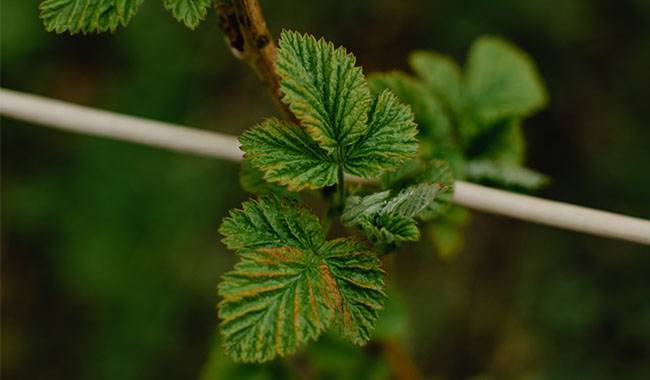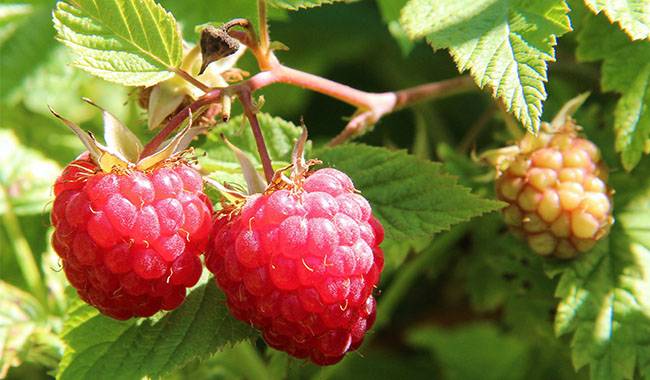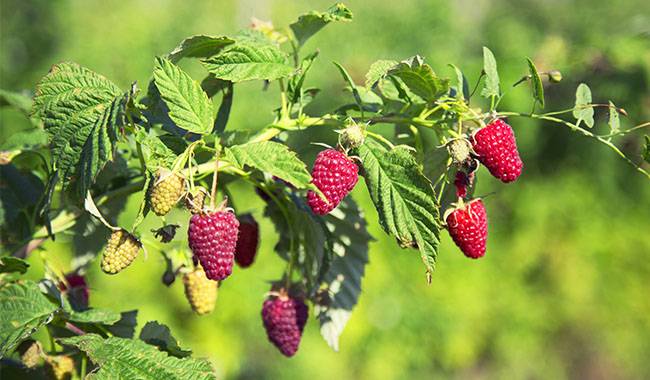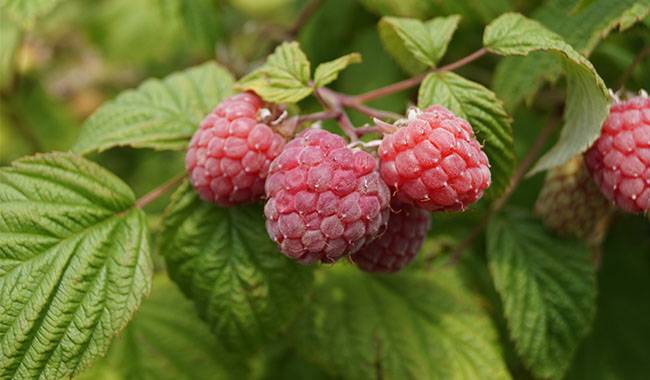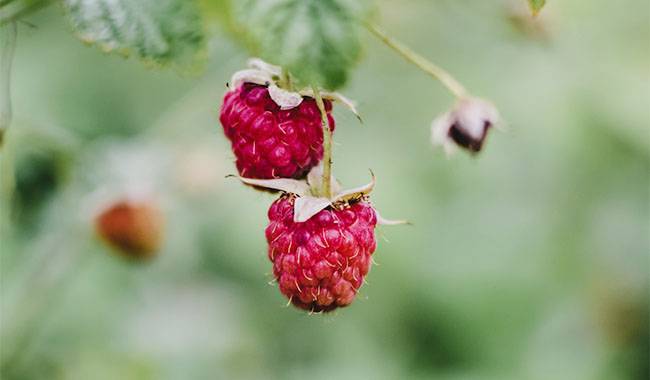
Choosing a successful Raspberry variety is half the job. In order for a Raspberry tree to produce a bumper crop, not only must the right place be chosen for it and the planting holes carefully prepared, but the plants must be properly nurtured each year.
Why does a Raspberry need pruning? To prevent overgrowth, timely removal of fruitful shoots, removal of diseased plants from the Raspberry tree, but most importantly – to obtain a good harvest.
After all, the number of flower brushes, their size, and even the taste of the berries, which you will agree, is the main purpose of their cultivation, depending on how to prune correctly and in time.
Let’s see how to properly raspberry pruning.
PRUNING OF SINGLE-FRUITED RASPBERRY VARIETIES
The easiest way to form single fruits of Raspberry, but not the most effective, is to prune the shoots 6-8inch (15-20 cm) in spring while removing the shoots from the previous year. It has the advantage of simplicity and one-time care for raspberries, but this method has little impact on yield.
However, there is an explanation for this method, which allows to stretch of the collection of berries. It consists of shortening the shoots of Raspberry at different heights.
In some plants it is standard – 6-8inch (15-20 cm), in some – 50% of the length, and in the rest – at a height of 6inch (15 cm) above the ground.
The significance of this technique is as follows: the less it is shortened, the earlier the harvest matures. However, this pruning also does not affect the number of berries.
PRUNING RASPBERRIES WITH THE SOBOLEV METHOD
To increase yields, there is another less popular but quite effective pruning method that allows you to increase the collection of berries from the same area of Raspberry. This is called the Soboleva method.
A.G. Sobolev’s method consists of two stages of raspberry formation. Each of them is designed to stimulate the formation of lateral branches, which leads to an increase in yield. Let us consider them.
- the first stage. It is the beginning of summer (June-July), the time when Raspberries are bearing and growing shoots in large numbers. Once the shoots reach a height of 30-48inch (80-120 cm), it is time to shorten them by 6-8inch (15-20 cm). This will stimulate the growth of axillary buds from the main shoots of the lateral branches, which will grow to 12-16inch (30-40cm) by the end of the bush vegetation.
- Phase II. Next year. Spring. It is necessary to shorten the Raspberry shoots again before the buds wake up, but now it is already the first stage, from the main stem, and only 2inch (5cm) shorter. This will again stimulate the formation of lateral shoots, but this time of the second order. In this case, flowering shoots will form on both first- and second-order shoots, which doubles the yield.
A short cut by Sobolev’s method visually resembles a tree with branches. Such shoots are allowed to bear fruit and are removed immediately without waiting for the end of vegetation. Early pruning of last year’s shoots ensures the release of nutrients for new shoots, increases the lightness and permeability of the bush, and thus – ensures the health of the Raspberry tree.
RASPBERRY PRUNING FOR THE OPPOSITE SEASON
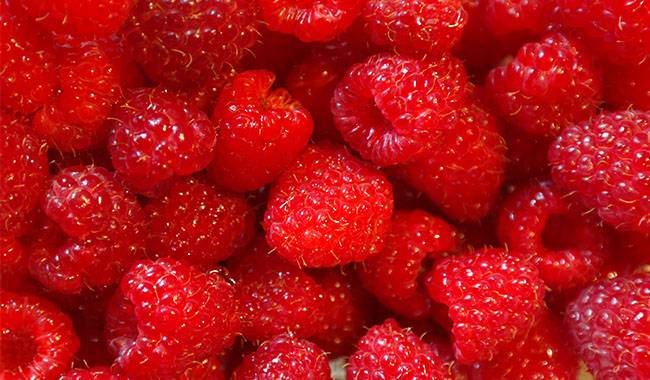
There are several other pruning techniques that apply to replanted varieties.
Option one. This method, more commonly used in the middle belt and north, involves the complete removal of fruit-bearing Raspberry bushes along with shoots in the fall or spring.
It is believed that this method increases the quantity and quality of berries for the following fall, but because of this, the summer harvest is lost.
Variant two. Raspberry fruiting shoots are removed immediately after the summer harvest of two years’ worth of shoots. The shoots are set aside for fall fruiting and the following year’s fruit set.
In addition to these techniques, there are others that depend to a greater extent on the health of the raspberry planting, but which can also affect yields.
Thinning pruning
Thickened Raspberry bushes experience a lack of light, lack of nutrients, and lack of aeration, which not only provokes the formation of smaller berries in smaller numbers but also weakens the plants in general and increases the risk of disease planting.
Therefore, in spring, when new shoots appear in the Raspberry bushes, it is necessary to regulate the bush load.
To do this, each bush is checked, and, depending on the growth potential of the variety and the planting method, 4-7 shoots in good form are selected and the rest are removed.
If the Raspberry is tied to a trellis, the shoots should be spaced at least 4inch (10 cm) apart. Therefore, the number of shoots is considered according to the possibility of their arrangement.
Hygienic pruning
Finally, hygienic pruning of Raspberry. It is carried out in early spring and in summer and autumn.
After a snowfall, it consists of removing frozen and broken shoots. During the vegetative period, it consists of removing shoots affected by diseases (cabbage) and insects (Raspberry stem galls, Raspberry stem fly, Raspberry kidney moth).
In autumn, it is necessary to remove the fruiting Raspberry shoots, if this is not done immediately after fruiting. In the meantime, shoots are grouped in clusters and leaned on the ground in a hidden place.
General rules of raspberry pruning
No matter what time of the year and no matter what variety of raspberries you prune, there are general rules for pruning this plant that will help make the pruning process as efficient as possible and safe for the crop.
- Pruning of raspberries is best done on a dry, sunny day.
- Use well-sharpened, sterilized pruning shears for pruning.
- After pruning diseased plants, the pruning shears should be disinfected (with kerosene and alcohol).
- The cut should be perpendicular to the ground, without “sails” (a strip of bark sticking upwards).
- When pruning under the roots, raspberries are not left stumped, because the remains of the stems left on the ground are a place for pathogens and pests to develop.
Dear Readers
If you have your own raspberry pruning tips, please share the information in the comments of the article. We are confident that your experience will help many readers learn how to prune Raspberries properly.




